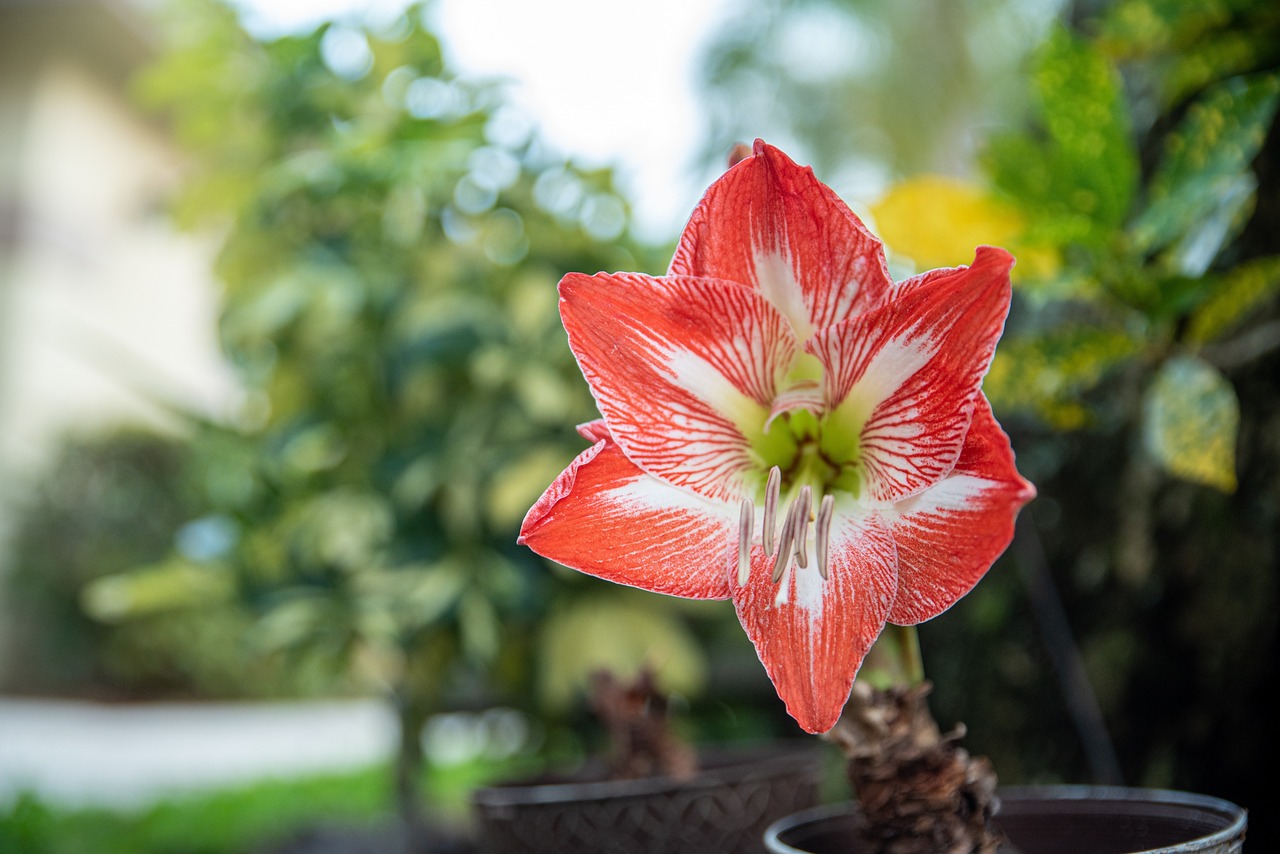This blog post will dig into the nuances of planting amaryllis outdoors, offering tips and insights for both novice and experienced gardeners.
Growing Zones

The ability to plant amaryllis outdoors depends largely on your location and climate. Amaryllis bulbs thrive in USDA Hardiness Zones 8-10. In these regions, winters are mild enough that the bulbs can survive in the ground year-round. If you live in a warmer climate, you can certainly plant amaryllis bulbs directly in the garden.
Planting Requirements

If you’re considering planting amaryllis in the ground, it’s important to keep a few factors in mind:
Soil Quality: Amaryllis needs well-drained soil to prevent bulb rot. You can mix regular garden soil with compost and sand to enhance drainage and provide nutrients.
Sunlight: Choose a location that receives bright, indirect sunlight. While amaryllis can tolerate some shade, they will flourish with at least six hours of direct sunlight daily.
Planting Depth and Spacing: Plant the bulbs about 8 inches deep and ensure they are spaced at least 12 inches apart. This allows for ample growth and airflow.
Timing for Planting
In regions where amaryllis can be planted in the ground, the best time to do so is in the spring after all danger of frost has passed. This allows the bulbs to establish themselves as they prepare to bloom in the summer.
Caring for Amaryllis in the Ground
Once planted, caring for your amaryllis is relatively straightforward.
Watering: Water the bulbs well after planting but avoid overwatering. The goal is to keep the soil slightly moist, not soggy.
Fertilization: Incorporate a balanced fertilizer into the soil at the time of planting or feed the plants every few weeks during the growing season with a diluted liquid fertilizer.
Mulching: Applying a layer of mulch can help retain moisture and regulate soil temperature, which is beneficial during the hotter months.
Pest Control: Keep an eye out for aphids and other garden pests. Organic insecticidal soap can be effective in treating any infestations that occur.
Winter Care: In colder climates (zones 7 and below), it’s advisable to dig up the bulbs in the fall before the first frost and store them in a cool, dry place until spring. This protects them from freezing temperatures.
Potential Challenges
While growing amaryllis in the ground can be rewarding, there are some challenges to consider:
Frost Sensitivity: Amaryllis bulbs can be sensitive to frost, so timing your planting and protecting young plants during unexpected cold snaps is crucial.
Bulb Rot: Poor drainage can lead to bulb rot. Ensure that the soil does not retain too much moisture, especially during rainy seasons.
Pests and Diseases: As with any plant, amaryllis can be susceptible to pests and diseases. Regular inspections and good cultural practices can help mitigate these issues.
Conclusion
In summary, planting amaryllis in the ground is a great option for gardeners in suitable climates. With the right conditions and care, these beautiful bulbs can thrive outdoors, providing stunning blooms and vibrant color to your garden every summer.
Whether you choose to plant them in the ground or continue enjoying them as indoor plants, amaryllis are a rewarding choice for any gardening enthusiast. So, if you have the right climate and conditions, don’t hesitate to give planting amaryllis in the ground a try!





